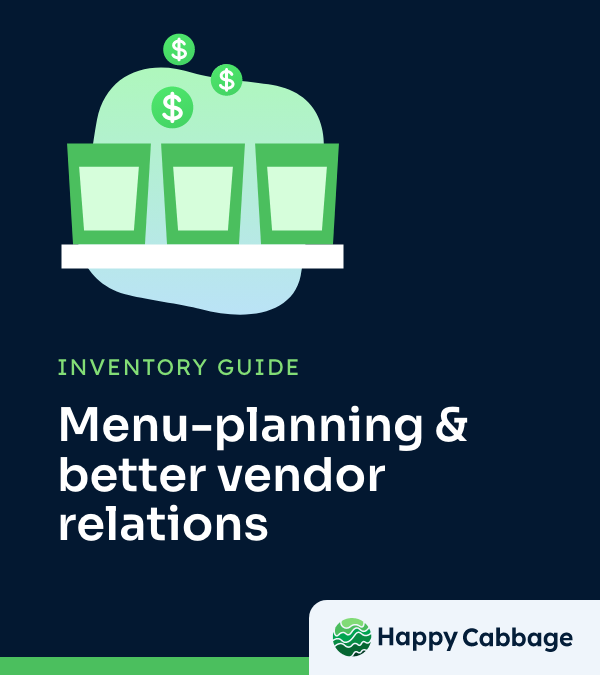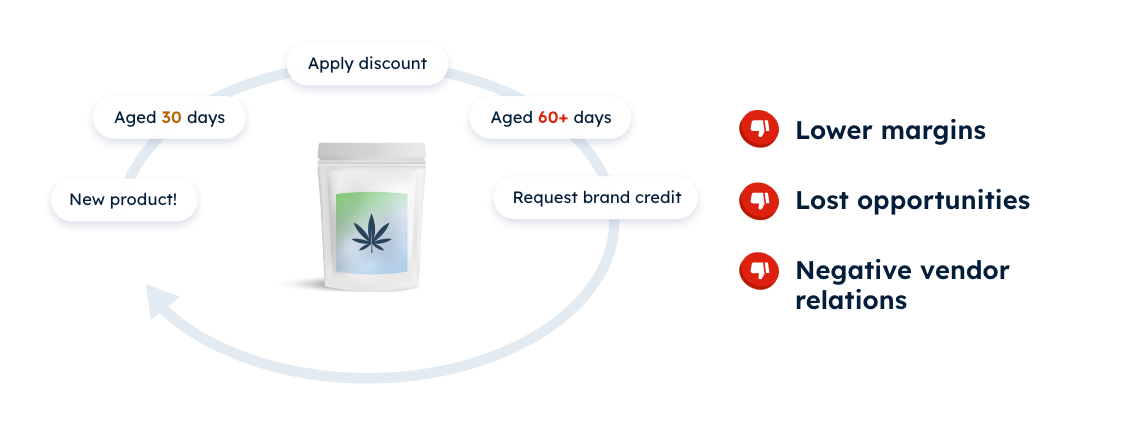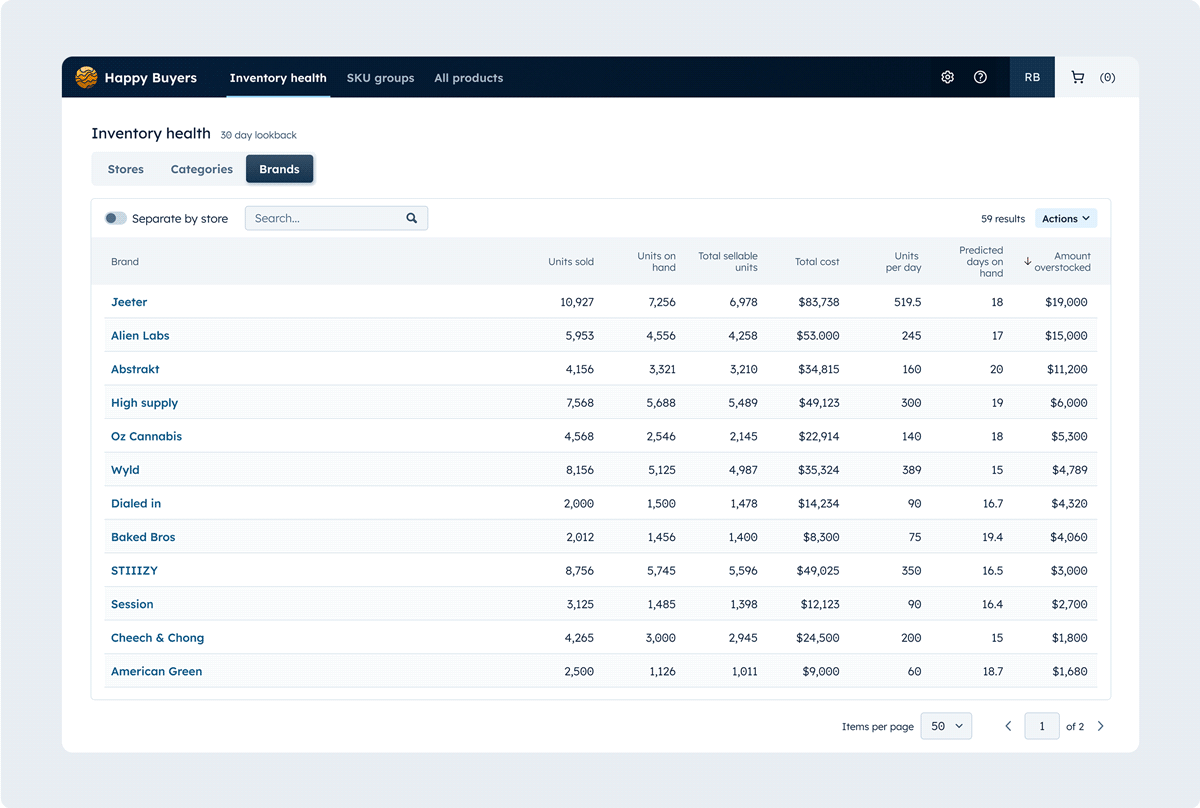See us at NECANN in Boston, MA, March 21-22, 2025 at Booth #1621
|
Webinar: Join Us June 25, 2025 @11 AM PST for The Buyer's Blueprint w/ Angela Pih - Register now

Let’s be honest—running a cannabis store isn’t just about stocking shelves. It’s about making smart choices with your menu, protecting your margins, and building partnerships that help you grow. And that doesn’t happen by accident.
One of the biggest things holding stores back? Aging inventory – the products that collect dust, eat up shelf space, and quietly tie up tens of thousands of dollars that could be working way harder for you.
We see it all the time. On average, Happy Buyers can help retailers free up $150,000 in inventory overstock reduction after 3 months of use. That’s money that could go toward hiring, store improvements, expansion—you name it. So let’s talk about how to flip the script.

Here’s how it usually plays out: a product doesn’t sell, you wait, and then you mark it down. It sits a little longer and you call the brand asking for a credit. Now both sides are annoyed, and no one’s really winning.
The longer that product sits, the more it costs you—not just in cash, but in lost opportunities. And once vendors get stuck with returns, they’re less likely to offer support or invest in your success next time.
Even if you make a little margin back because the brand covers the discount, you’ve now routed customers to lower margin products, which causes overall cash flow to drop, which cannibalizes from products you could sell at full price.
But it doesn’t have to be that way.
Good menu planning means choosing the right products, pricing them to protect your margins, and giving them the chance to move. The sweet spot for growing dispensaries? Realized margins around 40–45%. If you’re below that, it’s time to take a closer look.
How to calculate your realized margin:

What realized margins are good for retailers?

PROTIP: Make sure your team is following FIFO (first in, first out). This saying rings true... “You’re only as good as your oldest unit.”
Brands love to launch new products—it gets them in more conversations and opens doors. But more SKUs doesn’t always mean more success.
If a brand is pushing a new line without understanding your customers, it could become a warehouse anchor before it even hits the floor. You’re totally within your rights to ask:
Because here’s the thing: your shelf isn’t a dumping ground for experiments. It’s valuable real estate and your business needs to be profitable.
Want stronger support from your vendors? Give them clarity and consistency.
Set up monthly or quarterly check-ins (even just 15 minutes) to review:
If something’s not working, speak up early—don’t wait until it’s unsellable. Ask about swaps, credits, or price breaks on reorders. Most vendors would rather collaborate than clean up after a silent failure.
Here are a few phrases that go a long way:
These kinds of conversations turn vendors into true partners.

With clean, reliable data from Happy Buyers, it’s easy to share key data points with your vendors—like weekly and monthly brand trends in profit, margin, and aged inventory cost. Bringing this info to the table creates a shared understanding and opens the door for better, more productive conversations. It’s the kind of transparency that turns vendor check-ins into real business partnerships. Sign up for a free 14-day trial today to view your live inventory data and proven ROI.